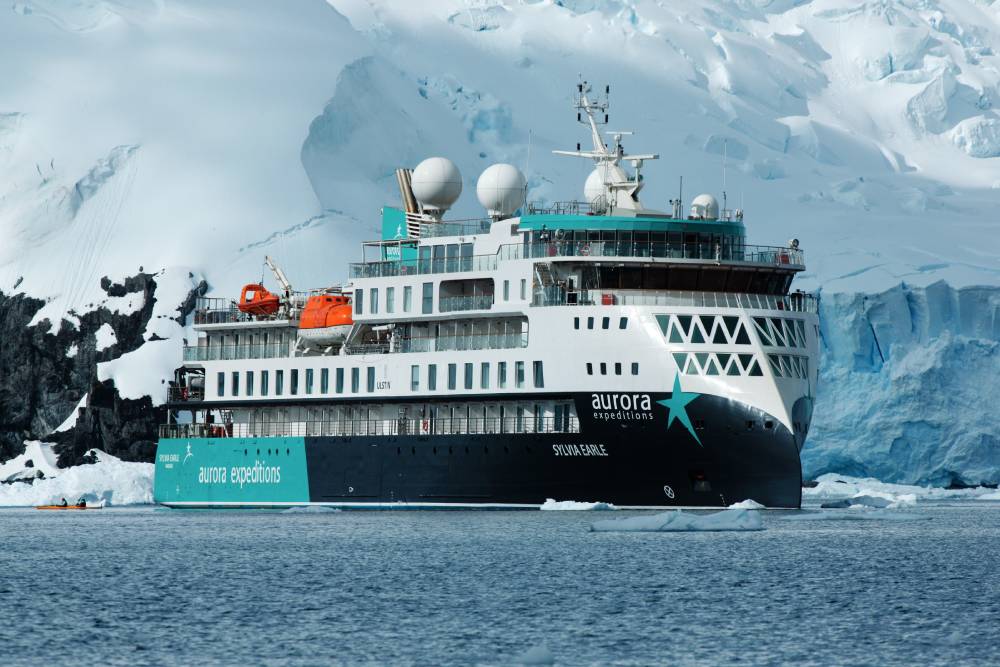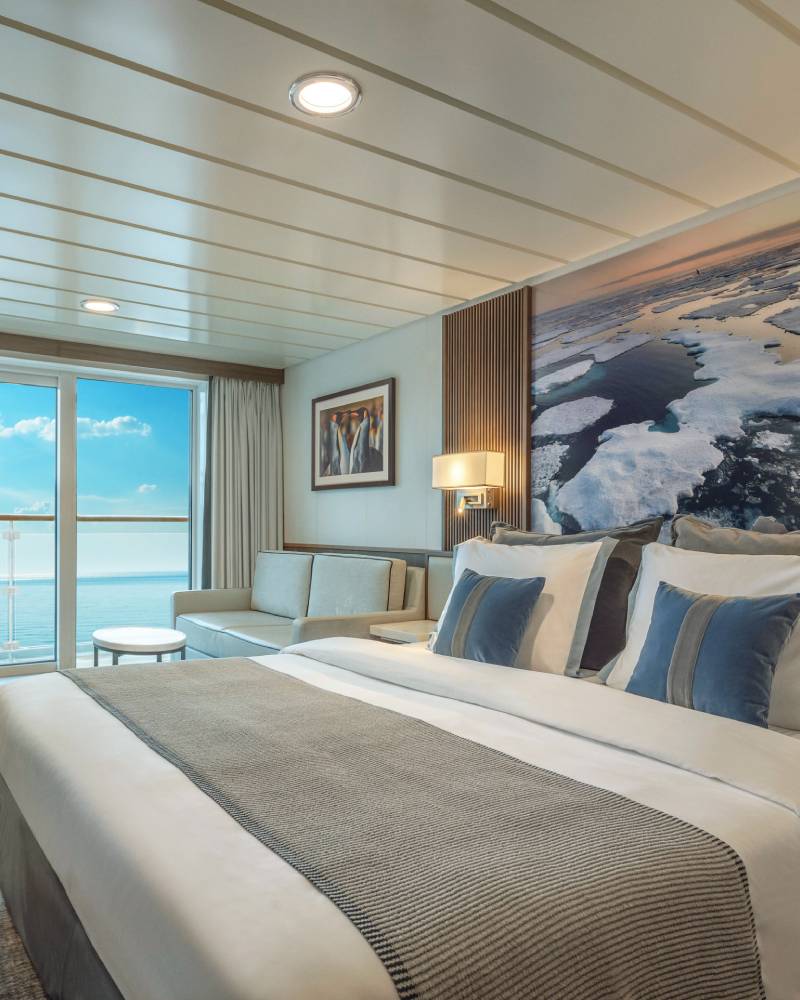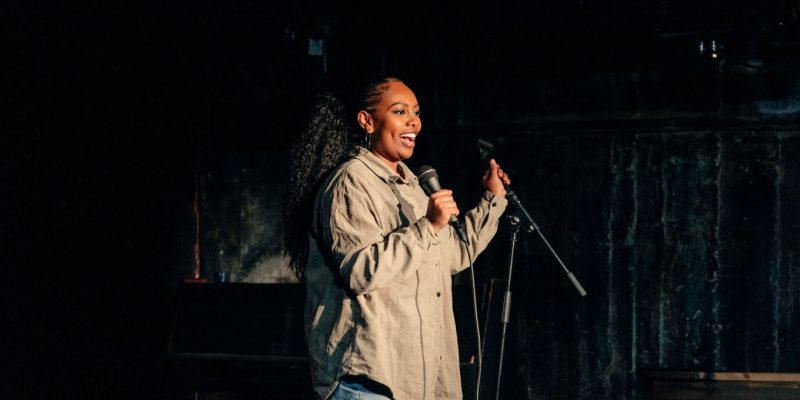Society
How These Eco-Conversationalists and Scientists Are Preserving Our Ecosystem
We're on thin ice.
by : Chloe Berge- May 17th, 2023

James Eades/Unsplash
Outside, snow falls like confetti into the silver ocean. A storm petrel glides above the water, its bronze wings flashing as it navigates the swells. The petrel is one of a handful of bird species a small group of us on board our Antarctic expedition ship have spotted and recorded as part of a Southern Ocean seabird survey. The project is run by the Polar Citizen Science Collective (PCSC) in collaboration with researchers at Cornell University, and the data collected by travellers like us helps paint a clearer picture of how climate change is affecting seabirds’ behaviour and population.
Antarctica is one of the fastest-warming regions on the planet, and the continent’s sea ice has shrunk to the smallest amount ever recorded, according to a report by NASA, which points to a shifting ecosystem that threatens the future of all life there. Warmer temperatures and melting ice not only endanger the area’s wildlife but also have implications for the entire planet, from a potentially catastrophic sea-level rise to a diminished capacity to reflect solar heat, which would increase global temperatures even more.
“I love connecting people to science, and travellers are a huge community that can help us understand what’s happening down there.”
 Birger Strahl / Unsplash
Birger Strahl / UnsplashWith the carbon footprint that comes with visiting the region, the development of tourism in Antarctica might seem detrimental. But sustainable small tour operators and conservationists, including pioneering oceanographer Sylvia Earle, think otherwise. Earle has collaborated with Aurora Expeditions—a member of the International Association of Antarctica Tour Operators, which advocates for environmentally responsible travel to the region—lending her name to the company’s new 100 percent climate-neutral ship (it mitigates all its greenhouse gases, not just carbon), which I’m travelling on. She also helped the company shape its citizen-science program and led the world’s first climate expedition to the White Continent this past February.
“The numbers are there, and the science is there, but what it really takes to get people to care about Antarctica is for them to be moved,” says Earle. “Travel is one of the great forms of educating and inspiring people to get outside their limited point of reference and also see that there’s immense common ground across all humankind and, in fact, all life.”
 Bartosz Strózynóski
Bartosz Strózynóski Being moved comes with the territory in Antarctica, where the sheer vastness and scale of the place is awe-inspiring even in the most mundane moments. Breakfast might come with a view of monumental black mountains topped with snowlike meringue. Then there is the light and colour: a monochromatic seascape painted in every shade of grey, white and blue, with icebergs encircled by luminous sapphire halos and a wan sun filtering through gossamer veils of mist.
Arriving at this kingdom of ice after a Herculean journey from Vancouver to Ushuaia, Argentina, and a two-day sail across the roiling Drake Passage—a treacherous body of water between the tip of South America and Antarctica—I feel like I’ve crossed a threshold into another dimension. I’ve never felt so far away from home, so extraplanetary, yet this place is right here on earth, the same planet that’s home to the Amazon rainforest and the Sahara Desert. Because human exploration in Antarctica only began at the end of the 19th century, it remains a relatively pristine ecosystem, but with climate change and other threats like overfishing changing that, being a responsible traveller means not only appreciating but also giving back. On a continent dedicated to peace and science by way of the Antarctic Treaty, it’s almost integral to the ethos of a trip there.
“It takes a lot of eyes and minds, a lot of people invested, to get the knowledge base that we now have.”
“It’s so expensive to get scientists down here, so getting travellers involved is a very cost-effective way to gather data across a broad geographical area,” says Nina Gallo, one of our expedition guides. One morning, I gear up and head out on a guided Zodiac cruise through Cierva Cove, where we weave around a constellation of floating ice sculptures. A sea lion lolls about on one of the smaller bergs, blinking impassively at me as we motor by.
The Zodiac up ahead is dragging a large net through the water, hoping to collect phytoplankton, microscopic plant- like organisms. The sample will then be sent to scientists at FjordPhyto, one of the other PCSC projects that Aurora Expeditions supports, so they can measure different phytoplankton species and behaviour and monitor how melting glaciers are affecting the population. Phytoplankton not only form the bedrock of the food web in Antarctica but also act as a carbon sink and produce over half of the earth’s oxygen—more than trees and other marine plants combined.
“I love connecting people to science, and travellers are a huge community that can help us understand what’s happening down there,” says FjordPhyto co-founder Allison Cusick. On the ship, a light-flooded conservatory space houses the company’s first dedicated citizen-science centre. In addition to allowing passengers to take a peek at phytoplankton samples under the microscope, the room acts as a hub for other PCSC projects, like Happy Whale and Penguin Watch, which rely on traveller reports to monitor populations.
 Benjamin Tan and Masano Kawana
Benjamin Tan and Masano Kawana“It takes a lot of eyes and minds, a lot of people invested, to get the knowledge base that we now have,” says Earle. “There’s a conscious effort in the tourism industry to have a light touch. You can’t go without impact, but they’re trying to offset the impact with the good things that come as a consequence of it.”
The life that calls Antarctica home is dependent on responsible exploration. On one of our last landings, at Damoy Point, I hike through snow to a ridge where a colony of gentoo penguins wobble, strut and huddle together against a frieze of mountains. The comical birds mate for life, and they’ll nest here if the temperature is right. It’s become too cold or too warm in certain areas, our naturalist guide tells us, and they may not breed this year. But we have to worry about our own species too. “We need blue space because it keeps us alive,” says Earle. “It’s the air we breathe.”
As dire as the outlook seems, Earle is the first to emphasize how important it is to stay hopeful, naming areas that are critical to ocean health and in need of protection “Hope Spots” as part of her Mission Blue initiative, which aims to establish a network of marine protected areas around the globe. As the ship prepares to sail back across the Drake Passage to Argentina, we cruise through Wilhelmina Bay, where dozens of humpback whales mist the icy air with their breath, thrashing their tails above the water. “There’s no place like home,” says Earle. “Our home.”
Read more:
Where Do We Go From Here?
Movies, Podcasts and Books to Educate Yourself on Climate Change, Sustainability and the Hunger Crisis
Women Are Leading The Fight Against Climate Change
Newsletter
Join our mailing list for the latest and biggest in fashion trends, beauty, culture and celebrity.
Read Next

Fashion
H&M's Latest Designer Collab With Rokh Just Dropped (And It's So Good)
We chatted with the emerging designer about the collaboration, his favourite pieces and more.
by : Melissa Fejtek- Apr 18th, 2024

Culture
5 Toronto Restaurants to Celebrate Mother’s Day
Treat your mom right with a meal at any of these amazing restaurants.
by : Rebecca Gao- Apr 18th, 2024

Culture
This University Elevates Women to New Professional Heights
You shouldn’t have to pause your life to move forward in your career.
by : ELLE Canada- Apr 16th, 2024




